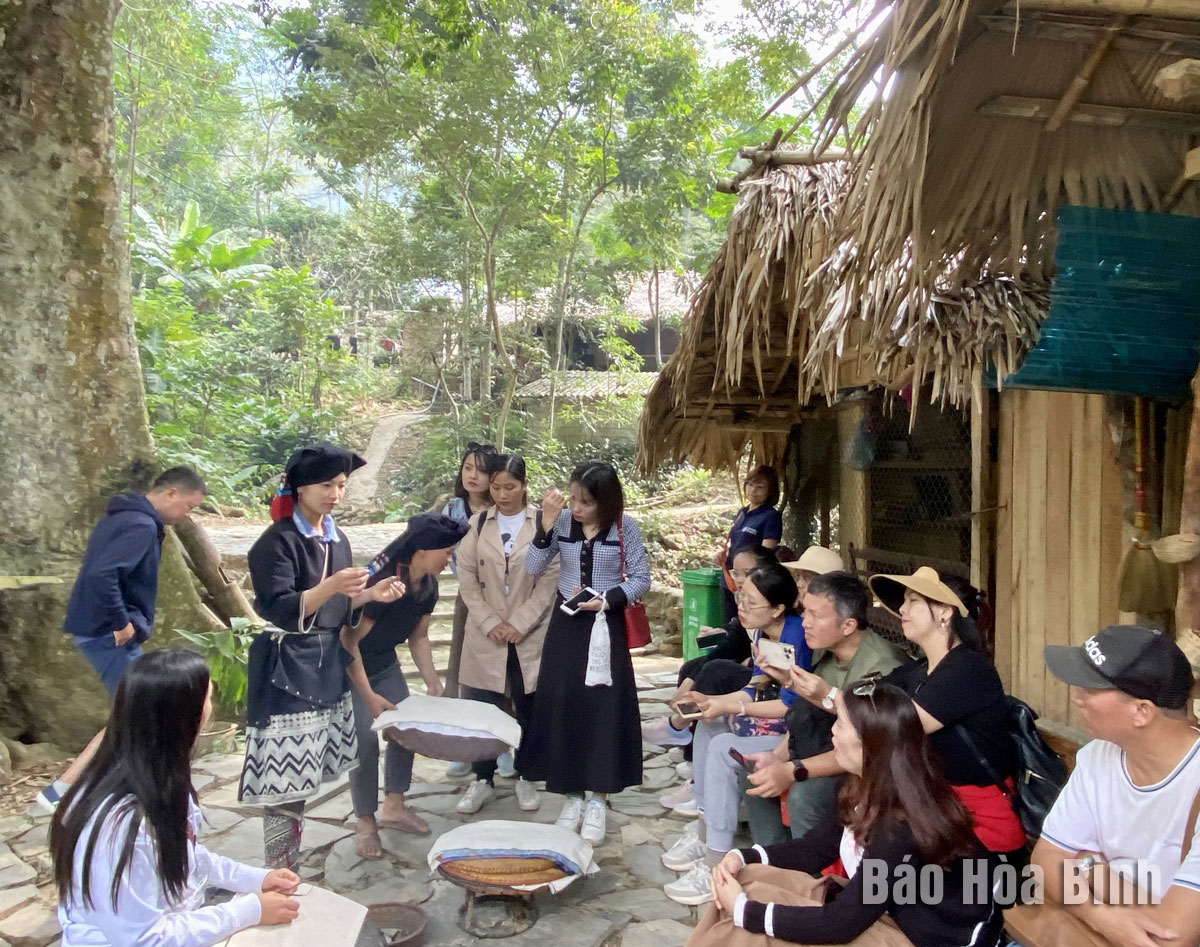
Da Bac district boasts pristine and majestic natural landscapes and is home to five ethnic groups of Muong, Tay, Dao, Kinh, and Thai. It is included in the master plan on the development of the National Hoa Binh Lake Tourist Area by 2030, providing favourable conditions for tourism development, especially community-based.
Travellers experience traditional crafts at Sung hamlet,
Cao Son commune, Da Bac district.
Beauty of community tourism site in Duc Phong hamlet, Tien Phong commune, Da
Bac district next to Hoa Binh lake. Homestay facilities at community tourism site in Doan Ket hamlet, Tien Phong
commune, Da Bac district, ensure standard accommodation for tourists.
Coming to Da Bac, tourists could explore and stay at community tourism sites in
Ke hamlet, Hien Luong Bay in Hien Luong commune, which is a branch of Hoa Binh
lake. They could experience the unique culture of the Muong people along with
the picturesque natural scenery, join exciting activities such as bamboo
rafting, kayaking, and enjoy cuisine with distinctive flavors.
About 38km from the district centre is Duc Phong village, formerly known as Da
Bia in Tien Phong commune – a destination for tourists seeking relaxation and
exploration of the life of the Muong Ao Ta ethnic community in the highland
region. With high-quality services provided by local residents, this tourist
spot was honoured with the "ASEAN Community-Based Tourism" award at
the ASEAN Tourism Forum (ATF) in 2019.
Doan Ket hamlet in Tien Phong commune is home to 28 Muong ethnic households
living along the banks of Hoa Binh lake. The hamlet boasts beautiful natural
landscapes, creating a perfect harmony of skies, mountains, lakes, and village
life of locals.
Tourists would find it hard to overlook the community-based tourism site in
Sung hamlet where the Dao Tien ethnic group in Cao Son commune is living. The
hamlet is situated at an altitude of about 530m, with the majestic Bieu
mountain range behind and terraced fields stretching along the hillside in
front, forming a stunning picturesque landscape.
According to Director of the Da Bac Community-Based Tourism JSC Dinh Thi Hao,
there are currently three hamlets in the district developing community-based
tourism with 13 households providing homestay services. This initiative has
attracted over 180 members from 142 households joining various teams and groups
that offer community-based tourism services. After 8 years of formation and
development, with the support of the Australian Foundation for the Peoples of
Asia and the Pacific (AFAP) in Vietnam in infrastructure, technical equipment,
promotion and training for local residents, community-based tourism in Da Bac
has been making rapid and sustainable progress, becoming an ideal destination
for both domestic and foreign tourists.
With its pristine landscapes, unique cultural heritage of Muong ethnic minority, and an expanding range of visitor experiences, Tan Lac district of Hoa Binh has fast become a captivating destination for both domestic and international tourists.
Until now, Sung village in Cao Son commune, Da Bac district remains the only Dao ethnic community in Hoa Binh province to develop a community-based tourism model. Beyond its untouched natural landscapes, cultural identity serves as the cornerstone attraction for visitors.
Alongside the diverse cultural identities of the Kinh, Muong, Tay, Thai, Dao, and Mong ethnic people, Hoa Binh province is also renowned as the "capital" of the northwestern Vietnamese cuisine, offering unique and distinctive dishes. At festivals, during Lunar New Year (Tet), or on significant family or community occasions, special dishes are prepared, leaving a lasting impression on visitors.
A Phong Linh (Yellow Tabebuia) flower garden in Thang village, Thach Yen commune, Cao Phong district is currently in full bloom, drawing a large number of visitors.
Community-based tourism has been thriving in Pa Co commune, Mai Chau district thanks to advantages in natural landscape and cultural identity.
Doan Ket commune of Yen Thuy district has recently held a ceremony to receive a certificate recognising Ta communal house as a provincial-level historical and cultural relic site.



